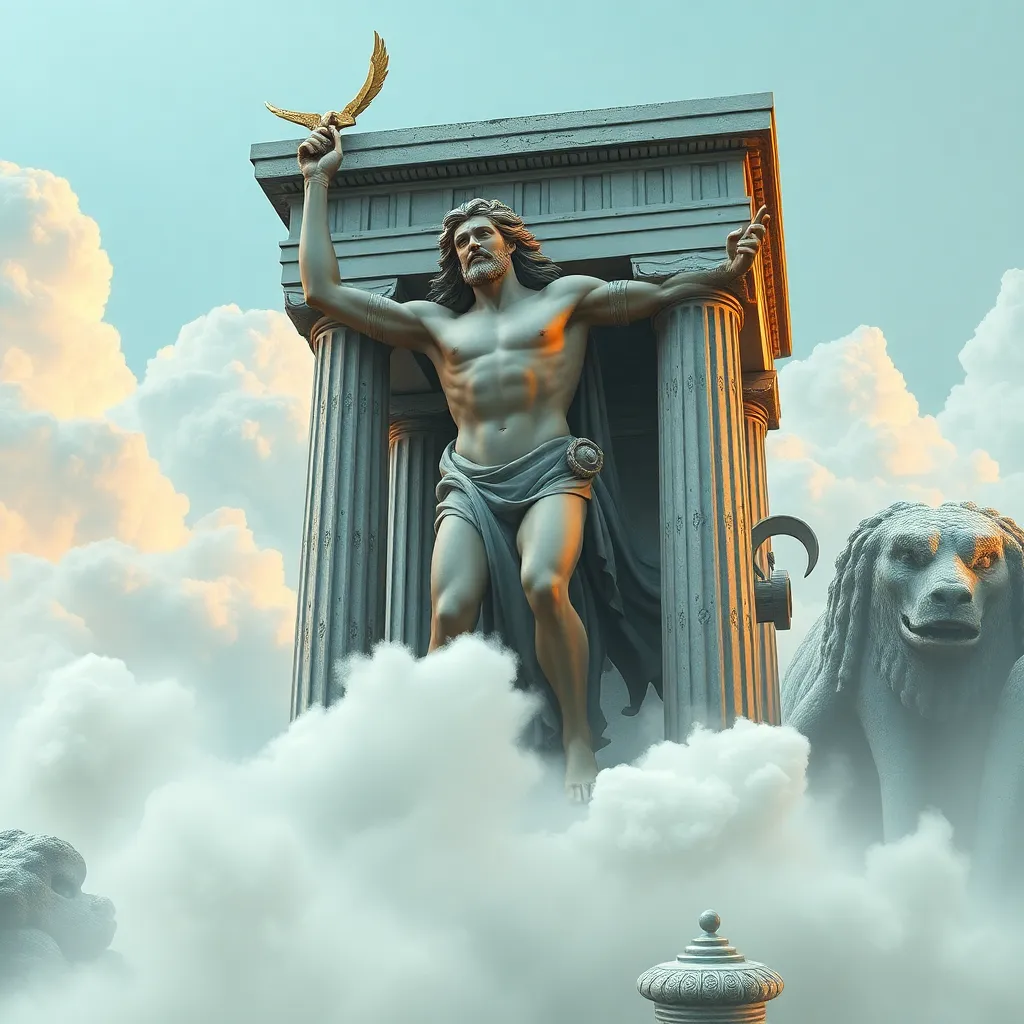The Legacy of the Titans: How They Shaped Greek Myths
I. Introduction
The Titans are a foundational element of Greek mythology, representing powerful deities who preceded the Olympian gods. They embody the forces of nature and the cosmos, playing a crucial role in the mythology that has influenced countless stories throughout history.
This article aims to explore the significance of the Titans within Greek mythology, examining their origins, their legendary battles, major figures, and their lasting impact on literature and art.
II. The Origins of the Titans
The Titans originated from the primordial chaos, emerging as the second generation of divine beings. They were born from Gaia (Earth) and Uranus (Sky), representing various elements of the world.
Key figures among the Titans include:
- Kronos: The leader of the Titans who overthrew his father Uranus.
- Rhea: The sister and wife of Kronos, known for saving her children from being swallowed by him.
The Titans’ role established a hierarchy in Greek mythology that influenced the narratives of gods and mortals alike. They were seen as the original rulers of the universe before the rise of the Olympian gods.
III. The Titanomachy: The Battle for Supremacy
The Titanomachy is the epic battle that marked the transition of power from the Titans to the Olympians. This conflict lasted for ten years and was pivotal in the mythological history of Greece.
Key players in this monumental clash included:
- The Titans: Led by Kronos and supported by various other Titans.
- The Olympians: Led by Zeus, who sought to reclaim the throne for his generation.
The outcome of the Titanomachy resulted in the defeat of the Titans, who were subsequently imprisoned in Tartarus. This battle not only established the Olympians as the new rulers of the cosmos but also set the stage for the numerous myths that followed, showcasing the themes of power, rebellion, and the cyclical nature of authority.
IV. Major Titans and Their Domains
Several Titans stand out due to their significant roles and the domains they governed, which influenced various myths:
- Oceanus: The Titan of the ocean, representing the vast waters that encircle the earth.
- Hyperion: The Titan of light, often associated with the sun and its divine power.
- Coeus: The Titan of intellect and the axis of heaven, embodying the concept of knowledge.
These domains were not merely titles; they shaped the narratives involving gods and mortals, influencing how stories were told and the morals they conveyed.
V. The Role of Titans in Human Affairs
The Titans emerged as archetypal figures influencing human behavior and fate. They were often depicted interacting with gods and mortals, providing a bridge between the divine and the earthly realms.
Several myths illustrate these interactions:
- The tale of Prometheus, a Titan who defied the gods by giving fire to humanity, demonstrating themes of rebellion and sacrifice.
- The stories of Atlas, a Titan condemned to hold up the sky, representing the burdens and challenges faced by humanity.
These narratives imparted moral teachings, emphasizing virtues such as courage, wisdom, and the consequences of hubris.
VI. The Titans in Later Greek Literature and Art
The legacy of the Titans persisted in classical literature, where they were often referenced by poets and playwrights to illustrate themes of power and chaos. Their stories influenced notable works, such as Hesiod’s “Theogony,” which detailed the genealogy of gods, including the Titans.
In ancient art and sculpture, the Titans were depicted in various forms, often showcasing their strength and grandeur. This artistic representation continued into the Renaissance, where artists like Michelangelo drew inspiration from Titan imagery, solidifying their place in Western cultural heritage.
VII. Comparative Analysis: Titans vs. Other Mythological Figures
When comparing the Titans to figures from other mythological traditions, such as Norse giants or Hindu asuras, several similarities and differences emerge:
- Similarities: Both Titans and giants represent primal forces of nature and chaos, often challenging the established order.
- Differences: Titans are often depicted as part of a structured pantheon, whereas giants may exist outside of such a hierarchy in some traditions.
The Titans’ place within the broader context of mythology highlights their role as archetypes that continue to resonate in modern storytelling, symbolizing the eternal struggle between order and chaos.
VIII. Conclusion
The Titans have left an indelible mark on Greek mythology and beyond, shaping the narratives that continue to captivate audiences today. Their stories of power, rebellion, and the complexities of existence offer timeless reflections on the human condition.
As we explore the enduring legacy of the Titans, we gain a deeper understanding of their significance in cultural narratives, literature, and art. The importance of the Titans in mythology serves as a reminder of the intricate tapestry of beliefs that have shaped human thought across generations.




